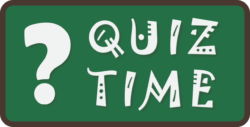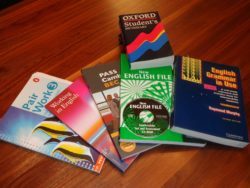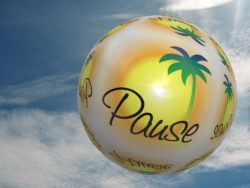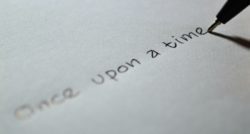Arlene Miller's Blog, page 35
May 2, 2019
My Life in Social Media
This post could also be called “Why I Haven’t Written Anything Lately,” “My Day on Social Media,” or “My Marketing Plan.”
 Image by Pixelkult from Pixabay
Image by Pixelkult from Pixabay“Why I Haven’t Written Anything Lately”: By that, I mean books. I keep writing blog posts! I have a first draft of a dating memoir that I wrote for NaNoWriMo (National Novel Writing Month) last November. But I am preparing to move across the country sometime in the next couple of months, so I have had too much on my mind to work on that book. I do hope to have it done this calendar year. And next year I hope to write and publish my business writing book.
“My Day on Social Media”: Being a Virgo, I am very scheduled, and I do the exact same thing every morning. That is when I get my social media “work” done. I suppose it is really a mixture of work and not-work, but I consider any social media done by a business person as work. So, this post is actually about my social media routine every morning, which is pretty much….
“My Marketing Plan”: Marketing is a tricky thing. There is so much you can do, it can overwhelm a writer so that we do nothing at all. But there is, of course, a happy medium. And when I read anything about the marketing tasks a writer should do, I am either doing it now or have done it in the past. Right now, my marketing plan consists of Amazon advertising (which seems to be working pretty well) and social media. By social media, I don’t mean posting pictures of my book covers and begging you to buy them. In fact, I do very little of that at all, mostly because I don’t think of it. I do share my blog posts every week, but I don’t push my books very often except when I have a new one. I think of social media as more of a way to get my name and what I do out there. So I connect with as many people as I can on social media for that reason — on both business and personal sites.
If you are a writer — or any other type of business person — or if you are just curious, here is my morning routine. I have to admit, I check my e-mail, my book sales, and Facebook at other times during the day, depending on how busy I am, but I always do this particular routine in the morning. I don’t use all social media (who can?), and I don’t even know most of the new ones — or how to best use the ones I do use. I am sure I could be using them better, but I am a creature of habit and tend to just keep doing the same thing rather than taking time out for a learning curve.
And I have been called — this very week — a Facebook Rockstar!
I am up and at my computer at 7:30. But I wake up much earlier. I have been trying to meditate lately, and I do that at 5:30, so I am done in time to stream my favorite comedy/political show on my phone at 6:00. I watch and drink coffee from 6 to 7:30 when I take the phone (to keep watching) and the coffee to my computer.
First and foremost, I check my book sales: Amazon and Ingram, where most of my book sales, but not all, occur. I track those on a calendar two or three times a day. Then I go to Amazon advertising to see how it is going: the ratio of what I am spending to what I am selling. I have been advertising my top three selling books on Amazon steadily for the past several months.
Then I check my bank balances, both personal (I like to keep my checkbook balanced) and business. If I have business expenditures or if anyone has deposited sales into the account, I note that in my “books,” which because I am technologically-limited, consists of a Word Doc with In and Out lists. Hey, it works for me, but does turn out to be quite a bit of work at tax time!
That done, I check the e-mail that is linked to my website; that is where any blog post comments will come in. Generally, there isn’t much there that can’t be immediately deleted, although you know I always answer the blog post comments.
I then go to Twitter. I really do wish I knew how to use Twitter better! On Twitter, I write my Word of the Day, or Tip or the Day, or whatever I am doing that month. This month it is Comma Rule of the Day; last month it was Commonly Misspelled Words. After I write it and share it on Twitter, I copy it and share it on LinkedIn, Pinterest, and Facebook (both personal and business pages). I used to put it on Google+, but that is now gone. While I am on the Facebook personal page, I check the birthdays and wish friends I actually know a happy birthday. While I am on my business page, I check the previous day’s postings to see the likes and comments. Here, you can find out who has liked a comment but hasn’t yet liked your page. You can then invite them to like your page with just a click.
Now I go back to Twitter to find interesting things to post on my Facebook pages — either business or personal, depending on the post. Most of these posts are memes or photos that I save and then put on Facebook for my friends’ and followers’ amusement. I also “like” and Retweet some of the posts I find. I look at my general Twitter feed, and then I search for “grammar,” “books,” “reading,” and “coffee.” Those are my topics of choice.
Next I go to my regular e-mail, of which I have two addresses. One used to be personal and the other business, but they are now kind of mixed together. Most of the e-mails I delete (I am sure you can relate); some I save for later. Later never seems to come, and the list of e-mails gets longer (and things get lost and deleted). I tell myself that soon I will take a few hours to go through them. I rarely do. It is too confusing to know which to keep and why to keep them and file them in yet another folder.
After the e-mail is taken care of, I go to Facebook, my social media “home.” I post those Twitter things I saved, some of them on my personal page and others on my business page. Then I look at my personal page timeline
to see what’s new. I share things, a lot of them political. I am always happy when people share grammar-type things with me and post them on my timeline.
Almost done, but not quite. I then take the memes and pictures from Twitter and save them to my photos on the computer (which links to my phone photos). In the evening, while I am on my exercise bike (but this is a whole other “routine”), I share those to Instagram and go through Instagram liking things.
Then I rest.
Now you know why I am not writing much lately, what my marketing plan is, and what I do on social media — every day.
Next week: Back to grammar!
April 26, 2019
Linguistics 101: Odd Driving Regionalisms and Slang in the USA
A guest post by Sarah Hollenbeck of The Zebra. We think you will really enjoy it!
“Careful, there’s a chughole on that feeder coming off The 101!” Huh? If you’re wondering what on earth that sentence means, you are about to find out! We’ve compiled some of the strangest, most unique slang for everyday driving terms used in the United States.
Starting with Harvard’s 2003 Dialect Study, we scoured the web for the strangest regionalisms we could find related to driving. Using Google Trends — and even the Oxford Dictionary — we’ve put together a collection of the most bizarre synonyms, phrases, and lexicon used across the country.
Driving is something that ties people together across the nation. But how they describe driving and the names for certain road features varies greatly by region. The Zebra took a deep dive into the linguistics of driving and the different versions of car language that exist and how they affect people who aren’t familiar with these terms. For example, the grassy area between the sidewalk and the street is called the “Devil’s Strip.” And while this phrase was coined during WWII, those outside of Ohio have probably never heard of this unique turn of phrase.
We also took a look at the popularity of the phrase at its origin point. You might be surprised to learn that the aforementioned “Devil’s Strip” is only used by .06% of Ohio drivers. However the term “Feeder Road,” used to describe the road that runs parallel to a major highway with entry and exit points, is used by .71% of Texans everyday. But no matter where you are within the country, familiarizing yourself with these terms can help you be a more informed and safe driver and can assist you in properly conveying directions to others.
There are a lot of linguistics that go into giving someone directions, especially if they are from a foreign place or are lost. Studies have found that people give and receive directions differently based on where they are from. But luckily, there are a few science-backed formulas that will help you communicate more effectively, no matter whom you talk to. Check out those formulas and all the most unique driving terms found across the country in our visuals. Just click here !
The Zebra is your one-stop destination for all your car and home insurance needs, comparing hundreds of quotes to get you the best deal possible.
April 18, 2019
The Comma Quiz
 Image by Jose R. Cabello from Pixabay
Image by Jose R. Cabello from PixabayAfter six weeks of comma posts, you are now ready for the quiz! Ready, Set, Go! (Answers are at the end if you scroll down.)
Insert commas in the following sentences where necessary. No other punctuation marks need to be added. Some sentences may be fine without any commas.
1.My sister and her friends are coming to visit.
2. I love the song “Forget You.”
3. Bob was usually a quiet man; however he screamed upon entering the room.
4. It is a cold rainy day.
5. This book which is written by William Golding is my favorite.
6. The book that is on top of the table is next on my reading list.
7. I decided not to cook dinner and went to the movies instead.
8. I was born on August 10 1980 in Lincoln Nebraska.
9. The only four ingredients in this recipe are sugar vanilla eggs and flour.
10. I did not do very well on the test however so I failed the course.
11. Yes Elaine the party is at my house.
12. My address is 1487 Markham Place Boston Massachusetts 01987.
13. She was wearing a bright blue dress.
14. I don’t like to cook and by the way I don’t like to bake either.
15. After reading new ideas popped into my head.
16. Under the chair in my bedroom sat the cat I had been looking for.
17. John J. Chatham Jr. is the mayor of Sunshine Nevada.
18. I have all genres of novels e.g. science fiction romance mystery and thriller.
19. Don’t wait for me because I might be late.
20. Although I want to go I think I have other plans for that day.
21. The letter was written in May 2000.
22. Why you don’t move out of that rat-infested apartment I will never understand.
23. The point of the matter is is she hiding something.
24. Out of 450 75 are over 80.
25. I think he is coming too.
26. My brother just started working at Haven Plastics Inc.
27. Helen Gonzalez Ph.D. is speaking at our conference.
28. Of course I will support whatever you want to do.
29. Is she going to run for secretary of the association is the question.
30. “I am planning a party next month” she said “but I don’t know which weekend.”
Scroll down for the answers . . . .
MORE
MORE
MORE
MORE
MORE
MORE
MORE
ANSWERS:
1.My sister and her friends are coming to visit. (No commas)
2. I love the song “Forget You.” (No commas)
3. Bob was usually a quiet man; however, he screamed upon entering the room.
4. It is a cold, rainy day.
5. This book, which is written by William Golding, is my favorite.
6. The book that is on top of the table is next on my reading list. (No commas)
7. I decided not to cook dinner and went to the movies instead. (No commas)
8. I was born on August 10, 1980, in Lincoln, Nebraska.
9. The only four ingredients in this recipe are sugar, vanilla, eggs, and flour. (The comma after eggs is optional.)
10. I did not do very well on the test, however, so I failed the course.
11. Yes, Elaine, the party is at my house.
12. My address is 1487 Markham Place, Boston, Massachusetts 01987.
13. She was wearing a bright blue dress. (No commas)
14. I don’t like to cook, and, by the way, I don’t like to bake either.
15. After reading, new ideas popped into my head. (Confusing without comma)
16. Under the chair in my bedroom sat the cat I had been looking for. (No commas)
17. John J. Chatham, Jr., is the mayor of Sunshine, Nevada. (The comma after Jr. is optional)
18. I have all genres of novels, e.g., science fiction, romance, mystery, and thriller. (The comma after mystery is optional.)
19. Don’t wait for me unless you want to be late. (No comma)
20. Although I want to go, I think I have other plans for that day.
21. The letter was written in May 2000. (No commas)
22. Why you don’t move out of that rat-infested apartment, I will never understand.
23. The point of the matter is, is she hiding something.
24. Out of 450, 75 are over 90 years old.
25. I think he is coming too. (No comma needed)
26.My brother just started working at Haven Plastics, Inc. (Use a comma unless the company doesn’t use one in its name.)
27. Helen Gonzalez, Ph.D., is speaking at our conference.
28. Of course I will support whatever you want to do. (A comma after of course is optional.)
29. Is she going to run for secretary of the association, is the question.
30. “I am planning a party next month,” she said, “but I don’t know which weekend.”
April 11, 2019
Commas Part 6: When NOT to Use a Comma
Some people love commas; they sprinkle them like salt over their words. They put a comma wherever they might pause or take a breath. Other people hate commas,  finding them unnecessary intrusions and feeling that they make the page look messy.
finding them unnecessary intrusions and feeling that they make the page look messy.
But there is somewhere in between, as we have seen in the past five posts about comma rules: Part 1, Part 2, Part 3, Part 4, and Part 5.
It is just as important to know where commas do not belong as where they do belong. And sometimes there is a gray area when it is up to you whether or not you want to use a comma. Yup — sometimes there is no correct “answer.”
Gray Areas
The issue of whether or not to put in a comma sometimes arises in a simple sentence, but more often it arises in a more complex and longer sentence.
Here is an example of a simple gray area:
Of course I will go with you. (It is really up to you whether or not to put a comma after of course.)
Here is a more complicated example of a gray area:
Monsters and ogres and make-believe animals and princes and princess — they are all here in this magical book, full of fantasy and mystery.
“I want to be both a doctor and a pilot when I grow up, ” said the little girl, without a second thought.
The commas placed before the final phrase in those sentences is really optional. The sentences are clear with or without the commas, and there is no rule for them.
When You Do Not Use a Comma
There are places where it is just plain incorrect to put a comma. In face, there are quite a few of those places.
1. Do not use a comma before a conjunction (for, and, nor, but, or, yet, so) if the words that follow the conjunction do not make a complete sentence.
She is going to the baseball game and might then go to a dance class.
She is going to the baseball game, and she might then go to a dance class.
In the second sentence above, the words following and make a complete sentence. The words in the first sentence do not.
2. Do not use a comma before or after parentheses unless there would be a comma there if there were no parentheses.
Please turn to Chapter 5 (“The History of Paris”) in your textbook.
Please turn to Chapter 5 (“The History of Paris”), which begins on page 600 of your textbook.
Both of those sentences are correct.
3. Do not put a comma between the subject and verb of a sentence unless there are words, a phrase, or a clause set off in commas between the subject and the verb. These sentences are all correct:
My mother and her sisters are traveling to Europe together.
My mother, along with her sisters, is traveling to Europe this summer.
Louise, Anna, and Maria are all sisters.
Lucas, my boyfriend, is really cute!
4. Do not put a comma between a verb and its object.
He is baking a cake for his sister. (yes)
He is baking, a cake for his sister. (no)
5. Do not put a comma between an adjective and the noun it modifies.
This is an old, textbook that I am selling. (incorrect)
This very pretty, dress belongs to my sister.
The old, torn book is going into the trash. (There is often a comma between two adjectives that both describe the noun, but no comma between the last adjective and the noun.)
6. Do not put a comma between a noun or verb and a prepositional phrase that follows it. These sentences should not have commas!
Please don’t put your feet, on the sofa.
I am baking a cake, from my grandmother’s recipe book.
7. Do not use a comma — even if there is a rule that tells you to use one — if it causes confusion! Here is a sentence that uses an Oxford comma where the comma makes the sentence confusing:
Alison, my sister, and I went out to lunch.
That sentence could be read two ways with the commas that are there. Alison could be your sister; therefore, two people went out to lunch. Or three people went out to lunch: Alison, your sister, and you. Leave out the Oxford comma if you mean that three people went. If Alison is your sister, the sentence is correct as it stands.
Alison, my sister and I went out to lunch. (Three people went out to lunch.)
Next Week: The Comma Quiz – To Comma or Not to Comma
April 5, 2019
Commas Part 5: The Light at the End of the Tunnel
Yes, there is an end to comma rules! This is the last post in our series of comma rules. But stay tuned because next week’s post is — When NOT to Use a Comma.
The previous posts in this series are Five Common Uses for Commas, Commas with Introductory Elements, Commas with Interrupters, and More Rules for Commas.
Here we go. Yet more rules for using commas:
Afterthoughts – Use a comma before an afterthought at the end of a sentence. Sometimes the comma seems optional, and you can leave it out. Your choice.
I am going to France this July, I believe.
Several people cannot make the meeting, I’m afraid.
You can ride with me of course.
He isn’t coming with us after all.
Contrasting Expressions – Use a comma in contrasting expressions; they usually begin with but, not, or rather than.
I like pizza, but not with anchovies
She has an older sister and a younger brother, not the other way around.
Seafood, rather than beef, is what I usually eat.
Here today, gone tomorrow. (Not technically a sentence, but … you get the idea. It’s like “garbage in, garbage out.”)
When OR begins an explanation rather than a choice – Sometimes or is used to begin an explanation rather than a choice. In such cases, use a comma.
She is in the high school IB program. or the college preparatory program.
Are you in the IB program or the vocational program?
To Separate Two of the Same Words Used Consecutively – This rarely happens and should probably be avoided. You can always rewrite a sentence in which you find yourself with two of the same words in a row. If you don’t, however, separate the words with a comma.
As she explained it, it seemed a bit complicated to me.
If that is what the situation is, is she going to be able to deal with it?
To Clarify a Sentence in Which a Word Seems to Be Left Out – Sometimes a word is omitted from a sentence (often the word that). Usually the sentence is still clear. However, if it is not, use a comma where that word should be.
The reason for my hesitation is, my brother is coming to visit.
I know they are best friends. (I know that they are best friends, but it is still clear written without that.)
The pencils are in the box over here; the pens, over there.
Unusual Word Order – Sometimes a sentence is written with the words in an unusual order. There is nothing wrong with that, but a comma can make the sentence clearer.
Why she doesn’t like chocolate, I will never understand.
Emphasis – You can use a comma to emphasize something, but I would not overdo it.
I agree, wholeheartedly, with your decision to move.
She, herself, has gotten that entire concert together.
Long Question at the Beginning of a Sentence – If you begin a sentence with a long question, you can use either a comma or a question mark after it. Both examples are correct.
How are you going to move all that furniture by yourself, is my question.
How are you going to move all that furniture by yourself? is my question.
Series of Questions in a Sentence – Once again, you can use either commas or question marks if you have a series of questions in a sentence. However, sometimes the implication is a little different, depending on which you choose.
Who is going to set up the room? deliver the food? greet the guests?
Who is going to set up the room, deliver the food, greet the guests? (This sentence seems to imply that one person will do all three things.)
Clearing up Confusion – Sometimes we say there are two comma rules: (1) Don’t use a comma unless you have a reason to. (2) Use a comma anywhere not using one would be confusing to the reader! So, wherever something might confuse a reader, a comma may help.
After eating ants invaded our blanket. After eating ants? After eating, ants invaded our blanket.
The two dogs were white with black spots, and brown with white feet.
There you have it! I am sure we could think of more comma rules if we really tried, but pretty much all comma uses fit somewhere into the rules that have been presented in the past five posts. Next week: When NOT to use a comma.
March 28, 2019
Commas Part 4: And More Comma Rules…
 Image by Gordon Johnson from Pixabay
Image by Gordon Johnson from PixabayMore comma rules? Yup. So far we have discussed some common uses for commas, using commas for introductory material, and using commas for interrupters. But there’s more! Here are more uses for commas . . .
Sometimes you need a comma between two adjectives that both come before a noun. Other times you don’t. How can you tell?
1. If the first adjective modifies the second adjective, rather than both adjectives modifying the noun, there is no comma.
She is wearing a bright blue dress. (Bright modifies blue, not dress.)
2. If you can put and between the two adjectives, and the sentence still makes sense, you need a comma.
We drove for miles along a narrow, winding road.
Please get that torn, dirty blanket off my bed.
3. You can always try the pause test. If you would pause, you probably need a comma. If you wouldn’t pause, no comma necessary.
Try on your new white shirt.
That beautiful green hat is mine.
You need a comma before etc.
If etc. falls at the end of the sentence, put a comma before it. If it comes in the middle of the sentence, put commas both before and after it. Don’t forget the period.
I love all types of Asian dishes including Thai, Chinese, Korean, etc.
Please bring your pencils, erasers, notebooks, pens, etc., to class the first day.
You need a comma before i.e. and e.g.
These two abbreviations follow the same rules as etc. Etc. means “and so on,” whereas i.e. means “that is,” and e.g. means “for example.”
She is the new drum major, i.e., the leader, of the marching band.
She can speak many languages, e.g., French, Italian, Spanish, and Portuguese.
You need a comma with direct address.
Direct address means calling someone by name in a sentence. Use a comma or commas regardless of where the name falls in the sentence.
Mom, can you please come to the front of the room?
Can you please, Yasmin, clean your room before you go out?
Did you mow the lawn yet, Jasper?
Use commas when you write addresses.
When you write an address on an envelope, you need a comma only between the city and state. If you are writing an address in text, you need more commas. Note there is never a comma between state and zip code.
John Jones
55 Main Street
Boston, MA 01911
I live at 55 Main Street, Boston, Massachusetts 01911.
Commas are used when writing dates. Sometimes.
Here are some examples:
March 22, 2020
March 2020 (no comma if the day isn’t there)
I have a valuable cover from the March 5, 1949, issue of Life Magazine. (Note the comma after 1949 too.)
I was born August 12, 1980, in Boston. (Notice the comma after 1980.)
Commas are used in numbers.
Commas are generally used in numbers containing four or more numerals:
1,000
65,000
10,000,000
If you should happen to write a sentence with two numerals in a row (perish the thought; please rewrite the sentence), put a comma between them:
Of the total of 400, 60 were girls.
Sometimes you need a comma with too.
If too (meaning “also”) appears at the end of a sentence, you do not need a comma before it. If it falls in the middle of the sentence, it should be set off with commas.
My brother says he wants to come too.
I, too, would love to take piano lessons.
Commas are used to set off academic degrees.
When writing academic degrees with their owners, use commas.
Val Smith, Ph.D., will be speaking at the conference.
I have an appointment with Alan Crosby, M.A., this afternoon.
Commas are used with Jr., Sr., and other such titles.
Use a comma between the person’s name and the title. However, in text you don’t need a comma after the title unless the person wants the comma there or if something follows the title that is set off with commas.
Martin Luther King, Jr. gave many inspiring speeches.
John Dean, Sr., president of the academy, spoke at the graduation.
Use commas in company names — usually.
Usually there is a comma before Inc. or Ltd. in a company name. However, you should punctuate the company name exactly as they do (or don’t).
I work for ABD, Inc.
Use a comma in greetings and closings of letters or e-mails.
Use a comma after the greeting of a letter or e-mail. However, if the letter or e-mail is formal (business), use a colon instead. Use a comma after the closing of a letter or e-mail.
Dear Sal,
Dear Dr. Norman:
Respectfully yours,
Use commas with however and therefore.
Use a comma with however or therefore when either word begins a sentence (or follows a semicolon). Use a comma before the word if it ends a sentence. If however or therefore occurs in the middle of the sentence, set if off with commas. But be careful! If however or therefore is actually connecting two complete sentences, you will need a semicolon (or period) before it. These are all correctly punctuated.
Therefore, I think you are doing the right thing.
I don’t think you should join that group, however.
You seem to have researched the situation. Therefore, I think you are doing the right thing.
You may go against my wishes, however, and that is your choice.
Next Week: More Commas Still!
March 22, 2019
Ten Grammar Mistakes ESL Students Make
I am happy to present a guest post by Nora Mork:
 Image by Kollakolla from Pixabay
Image by Kollakolla from Pixabay
If you want to speak English well, you should learn some basic English idioms. Speaking naturally comes with slang as well. But before all that, you should focus on learning proper English grammar and correcting your grammar mistakes.
Here are some of the most common English grammar mistakes ESL learners make — and how they can avoid making them in the future so they can learn faster and gain more confidence:
1. May vs. Might
This is a tricky one because the difference is pretty small. Both words state that something is possible, but might is more uncertain than may.
So, keep in mind that saying that you may do something has more weight; it’s a lot more certain and stronger than saying that you might do something. Might should be used when what you say will maybe happen but then maybe it won’t.
May also turns into might in the past tense.
2. Fewer vs. Less
This is a mistake both native and ESL speakers make. These words both describe the opposite of more, but you need to keep the noun in mind when deciding whether to use fewer or less. Fewer is used for countable nouns — when you can count the number of things you are addressing. Less is used with uncountable nouns — something that can’t be used with a number in front of it like love, water, electricity, and so on.
3. Could, Should, Would
These sound the same but mean different things. Should is used when you give advice to someone. Would is used to describe situations that are unreal or unlikely and to make polite offers. Could can be used to describe a past ability, possibilities in the future, or to make polite requests.
4. Since and For
These words are both used in relation to time. For is used with a period or a duration of time, while since is used with an exact moment in time. For comes before expressions like 10 minutes, 6 months, and so on. Since comes before Monday, January, 1995, for example.
5. Bring or Take
These two words have almost the same meaning, but they have different directions.
Bring suggests that you are moving something to the speaker; you are bringing things to where you already are. Take means that you are moving away from the speaker. You take things with you, but people bring stuff with them to you.
6. Order of Adjectives
Keep in mind that adjectives — if there is more than one of them in a row — always go in the same specific order.
The normal order is
Quantity or number
Quality or opinion
Size
Shape
Age
Color
Nationality
Material
Not all of these are used at once; use three at most at the same time.
7. Me and Myself
When to use me and when to use myself is another big ESL problem.
“Well, me is an object pronoun which refers to the person the action is being done to – so use me when something is being done to you,” says Tiana Franklin, an educator at Bigassignments and Resumention. Myself is reflexive and generally only used in sentences that have I in them as well.
8. There, Their, and They’re
This is a common mistake even with native speakers. These words sound the same but are definitely not the same.
There is a place, or it is used with the verb to be. Their is a possessive adjective, which signals that something belongs to them. They’re is a contraction of they are.
9. Its vs. It’s
These two words often cause another mistake common with both native and ESL speakers. Its signals that something belongs to it. It’s is a contraction of it is.
10. A or The
There are many languages that don’t use definite and indefinite articles ,which means that many ESL learners will have trouble with this. When you are talking about something in a general way, you should use the “a” article, but when you are referring to something specific that everyone is familiar with, you should say “the.” Academ advisor and Revieweal might help you find out where to use a and where to use the in your conversations.
Learning a language is hard, especially English since there are so many differences in grammar from other languages. But you can manage to overcome these mistakes and become a more fluent speaker.
Nora Mork is an e-learning journalist and an ESL tutor at Oxessays. She helps ESL students achieve learning goals  by sharing her experience in lectures and language learning posts at such online magazines and blogs as Academized and Writemyaustralia.
by sharing her experience in lectures and language learning posts at such online magazines and blogs as Academized and Writemyaustralia.
March 15, 2019
Commas Part 3: Interrupters
Often, you have a word, a phrase, or a clause that interrupts the flow of the sentence. Sometimes you use commas around such an  interrupter. If the element is added information and you don’t need it for the meaning of the sentence to be clear, use commas around it. Such a word, phrase, or clause is called “nonrestrictive,” or “nonessential.” If the information is necessary for the meaning of the sentence, do not use commas. Such information is called “restrictive,” or “essential.” At times, it might be difficult to ascertain whether something is essential or not. Sometimes you can tell by using the “would I pause?” test, but not always.
interrupter. If the element is added information and you don’t need it for the meaning of the sentence to be clear, use commas around it. Such a word, phrase, or clause is called “nonrestrictive,” or “nonessential.” If the information is necessary for the meaning of the sentence, do not use commas. Such information is called “restrictive,” or “essential.” At times, it might be difficult to ascertain whether something is essential or not. Sometimes you can tell by using the “would I pause?” test, but not always.
Here are some nonessential interrupters:
I know, by the way, all about your little secret.
This story is, for your information, good enough to publish.
My neighbor two doors down, who recently moved in, just left for Italy. (You already know which neighbor: the one two doors down.)
My brother’s math teacher, Mr. Quinn, is a really easy grader. (Presumably, he has only one math teacher.)
My birthday cake, chocolate with lemon icing, was delicious! (We are assuming it was your only birthday case, so we don’t need to distinguish it from other cakes.)
Which one of these is correct?
Joe’s mother, Abigail, is wearing the same dress as I am.
Joe’s mother Abigail is wearing the same dress as I am.
If you said “the first one,” you are probably correct. Can you tell the difference in presumed meaning?
The first sentence treated Abigail as unnecessary, added information. The second sentence assumes that Abigail is necessary to the meaning of the sentence. What is the difference, and why is the first sentence most likely better?
We can assume that Joe has only one mother. Therefore, we don’t really need to use her name. Using her name implies we are specifying which mother out of multiple mothers.
So….which one of these is correct?
My brother, Paul, is the tallest person in the family.
My brother Paul is the tallest person in the family.
Either one could be correct, depending on the makeup of the family. The first sentence, which treats Paul as added information, assumes that you have only one brother so you don’t need to name him. The second sentence, which treats Paul as necessary, implies that you have more than one brother, so you need to specify which brother you are talking about.
Here are some essential interrupters: no comma.
My neighbor across the street has a beautiful garden. (Which neighbor? Oh, the one across the street, not the one next door.)
The pizza with the anchovies is nearly gone. (Which pizza? The one with the anchovies, not the one with pepperoni.)
All the teachers who have been at the school for more than 20 years are being honored. (Not all the teachers, but just the ones who have been at the school for more than 20 years.)
All the teachers, who have been at the school for more than 20 years, are being honored. (This could mean all the teachers have been at the school for over 20 years. It could also mean you know which group of teachers is being referred to, and you are mentioning they have all been at the school for more than 20 years.
Usually participial phrases that interrupt a sentence are set off with commas:
My dog, gnawing on a big bone, must be hungry.
The principal, marching into the classroom with a red face, must be very angry.
I don’t know how the cat, walking along the top of the fence, doesn’t fall down.
Often a descriptive phrase is set off with commas:
This coffee, much too strong for me, needs a lot of sugar.
The sky, usually beautiful at sunset, was dark and foreboding today.
My history paper, due next Tuesday, will likely be late.
Stay tuned for a guest post about Ten Grammar Mistakes ESL Students Make next week — followed by more in the comma series — for you comma lovers (or haters).
March 7, 2019
6 Tips to Teach Writing to a Student with Autism
 Image by Alexandra_Koch on Pixabay
Image by Alexandra_Koch on PixabayA guest post by Chloe Bennet
Autism can affect the way children learn, and it is commonly accompanied by concurrent difficulties such as dyslexia, dysgraphia, and dyscalculia. Writing can be difficult for children with autism both because of organizational difficulties and coordination challenges. Teaching a child with autism to write can be a challenging and unique experience, but there are many solutions to help them learn this highly important skill. Use these six tips to teach writing to a student with autism.
Read to Them
One of the best ways for anyone to improve their writing is to simply read more. You may find what works best is to read to your child. “Let them pick books on subjects that interest them, and they will be more likely to pay attention. Books about the alphabet are also a good idea because they can help introduce basic reading and writing elements that will help the child begin to write. Try and keep your sessions relatively brief, since children with autism often struggle to sit still for long periods of time,” writes Robert Beavers, educator at Academized. Read on your own, and let your child see you reading, to encourage them to do the same.
Try Grips and Texture
If your child is having difficulties gripping a pencil, consider picking up a pencil grip to help them. These grips can take the form of soft pads that wrap around the pencil, finger holes, or even special pencils designed to be easier to grasp. You can also try using touch to get them started writing. Some autistic children enjoy certain textures, so you can use these textures to encourage them to write. Some examples include finger painting or even writing in shaving cream.
Use Simple Language
Keep your language as simple and concrete as possible. Try to get your point across in as few words as you can. Using this kind of very straightforward language might feel different and strange, but it will help you communicate better with a child with autism. In the same vein, give the child a small amount of choices to pick from. The more options, the more confused an autistic child will become.
Add Writing to Their Daily Routine
Children with autism can thrive when they are following a routine. They appreciate the safety and stability of these routines, so apply that when teaching them writing as well. As writing becomes a regular part of their daily schedule, you may see a significant increase in their progress. Be sure not to pressure them into writing. If they really don’t feel like writing, it’s best to let it go and move on with the routine. They should look at writing as something fun, not a chore.
Try Autism Writing Tools
We already mentioned using grips to help your child with writing, but there are more options. If the child struggles with pencil grip, try giving them weighted pencils to give them some sensory feedback that will help them improve. You can also use hand and wrist weights for this purpose, and also to provide a sense of security.
Use Online Tools for Extra Help
Autistic students can learn how to write an essay; it just takes a unique approach. These online resources can help you and your student improve writing skills and have fun:
#1. ViaWriting and WritingPopulist – Use these grammar resources to break down grammar rules and make them more approachable for your student with autism.
#2. Academic Paper Help and EssayRoo – These online proofreading tools have been recommended by Essayroo review and are very helpful for a student learning to write.
#3. StudyDemic and StateofWriting – Read through these blogs, and you’ll learn some helpful suggestions about essay writing. Then you can put those suggestions to good use and use them to help your student with autism.
#4. Boom Essays and UKWritings – Check out these editing tools, which have been reviewed by UKTopWriters. Editing is one of the most challenging aspects of writing, and most people don’t do well at editing their own work.
#5. MyWritingWay and LetsGoandLearn – Use these academic writing guides to make sure your student is familiar with all the steps in the writing process.
Conclusion
Teaching children with autism to write can be challenging, but with the right approach, you can successfully teach your child how to write. Read to them and help introduce the basics to them. Make it a part of their daily routine; children with autism thrive on routine. Take advantage of online writing tools, as well as aids such as grips and weights, to help them learn.
Chloe Bennet is a book editor and proofreader at Assignment Writing Service and Big Assignments websites. She helps with book marketing, design, and legal aspects of publishing. Chloe also tutors at Elite Assignment Help portal.
February 27, 2019
Commas Part 2: Introductory Elements
When we write, we don’t always start our sentences with the subject: I graduated from college five years ago.
 Image by Ramdlon on Pixabay
Image by Ramdlon on PixabayWe often — and we should — vary our sentence structure, beginning with an introductory word, idiom, phrase (group of related words), or clause (group of related words with a subject and a verb). Many of these introductory elements are followed by a comma.
Introductory Words
Most of the time introductory words are transitional words like first, second, next, last, finally, etc. Transition words are generally followed by a comma.
First, I would like to introduce our guest speaker.
Finally, you should always check your work.
Sometimes a sentence begins with an adverb. We have a gray area here. Sometimes there is a comma, and sometimes there isn’t. In this case, the “pause” test works. If you think there should be a pause there, put in a comma.
Obviously, I hid the surprise from her.
Suddenly she appeared at my doorway.
Introductory Phrases
There are several types of phrases. You can begin a sentence with a prepositional phrase. If the phrase is short, you do not need a comma after it. However, if it is longer, or if you are using two prepositional phrases in a row (or two consecutive phrases of different types), you probably need a comma.
In Paris I bought myself an entirely new wardrobe.
In Paris in December, you probably need a heavy coat.
You can also begin a sentence with a participle or a participial phrase. Usually a comma follows a participial phrase.
Walking along the river, she spotted a lost dog.
Walking quickly, she tried not to miss the bus.
Make sure your participial phrase isn’t misplaced or dangling. The word following the comma should go with the phrase. Here are a couple of misplaced modifiers:
Walking along the river, the rain began to come down. (Is the rain walking along the river??)
Reading a book by the window, the cat jumped in my lap. (Is the cat reading a book by the window??)
Be careful with your participles!
Descriptive phrases are usually followed by a comma.
Pretty as a picture, she walked down the fashion runway.
Here are some examples of phrases that would not be followed by a comma.
Infinitives look like verbs with the word to in front of them. But they are not verbs. They are actually used as nouns. Therefore, they themselves can be the subjects, so technically the subject is starting the sentence.
To become a doctor is my ambition. (No comma after doctor. To become a doctor is used as a noun and is the subject.)
Gerunds also look like verbs — or participles — but again they are used as nouns and can actually be the subject.
Skiing in Tahoe is my favorite hobby.
Running a few miles is something I try to do every day.
Introductory Sayings or Idioms
Once again, this is sometimes a gray area. Usually, there is a comma after an introductory idiom, but not always. Once again, the “pause” test usually works!
In my opinion, this is not the right way to do it.
Of course, I am not an expert on the subject.
Of course I will go with you.
Introductory Clauses
Introductory adverbial clauses are always followed by a comma. Those clauses begin with words such as although, until, before, after, since, because, whenever, wherever.
Although I wasn’t there, I heard about what went on.
After the game is over, we are going out to dinner.
Because I have a doctor’s appointment, I will miss school tomorrow.
Introductory noun clauses are usually not followed by a comma (and there would be no pause) because they are subjects.
Whoever is coming should RSVP to me.
Whatever you tell me will be kept secret.
Whatever you tell me, I will keep secret. (Here, I is the subject, not the introductory clause. You would probably want to put a comma there.)



